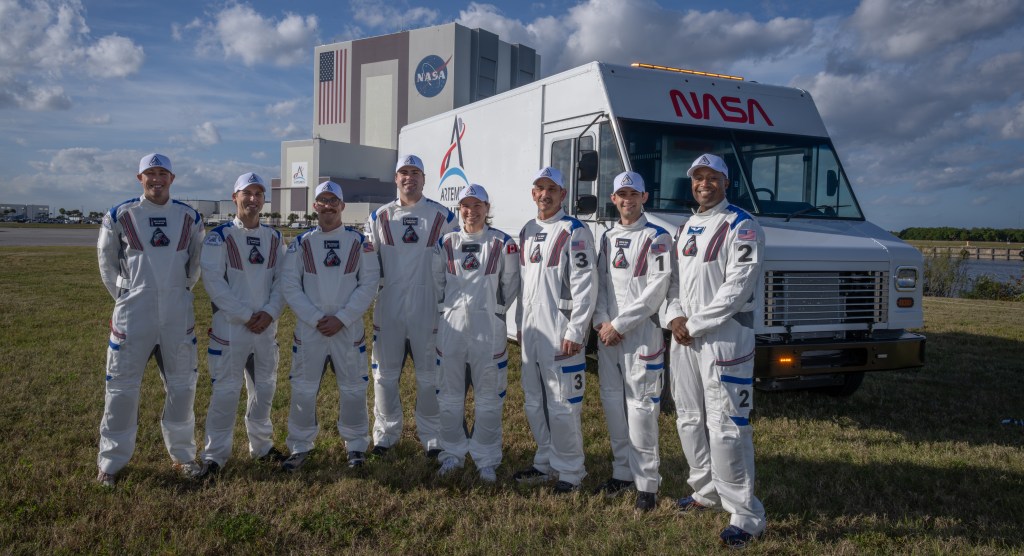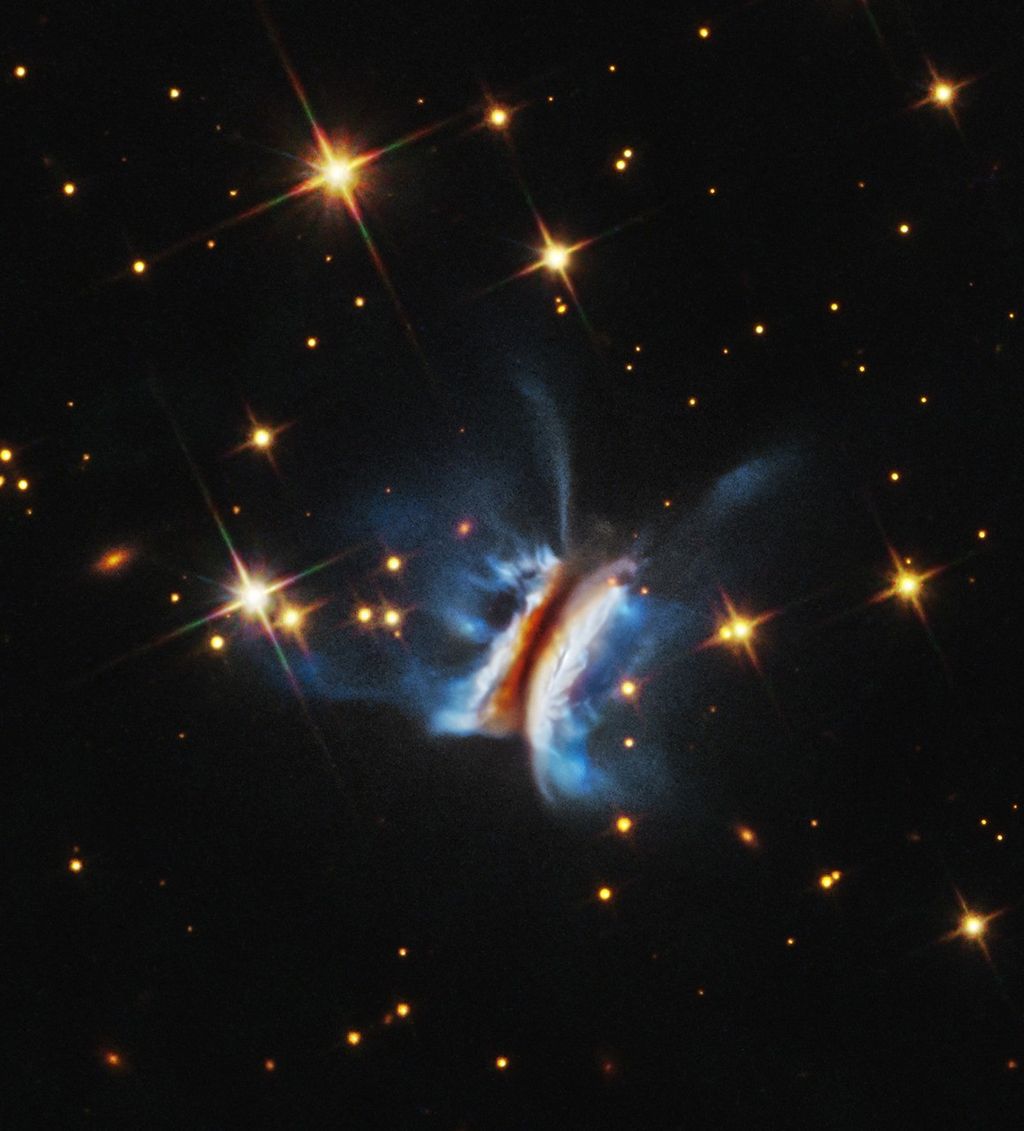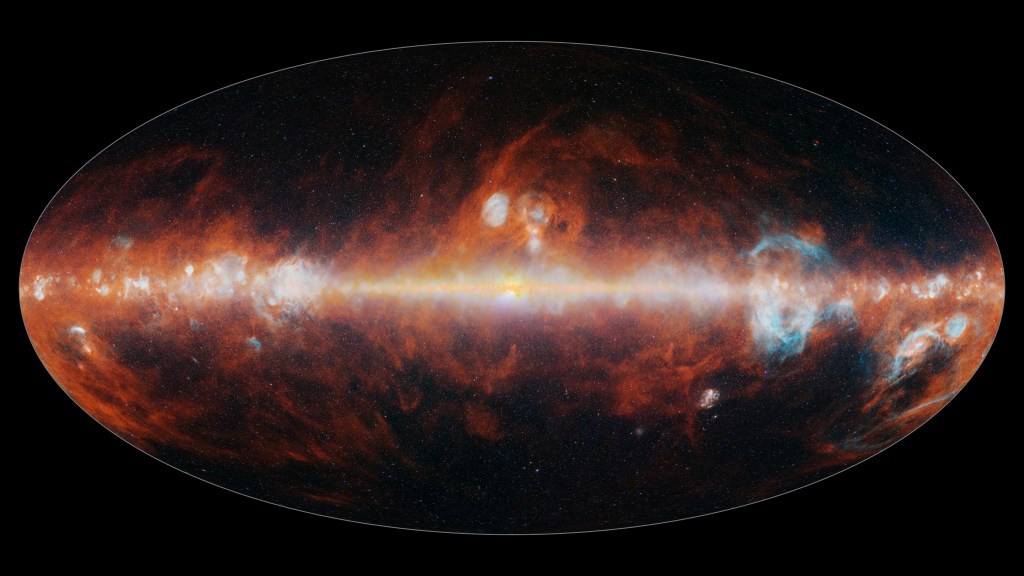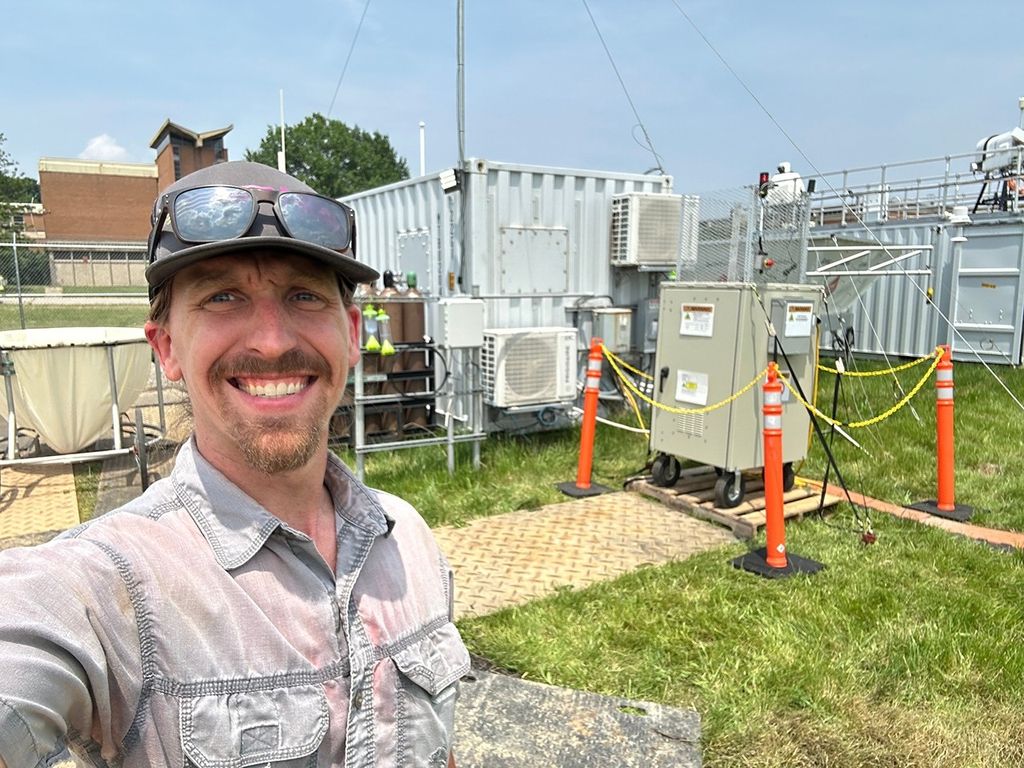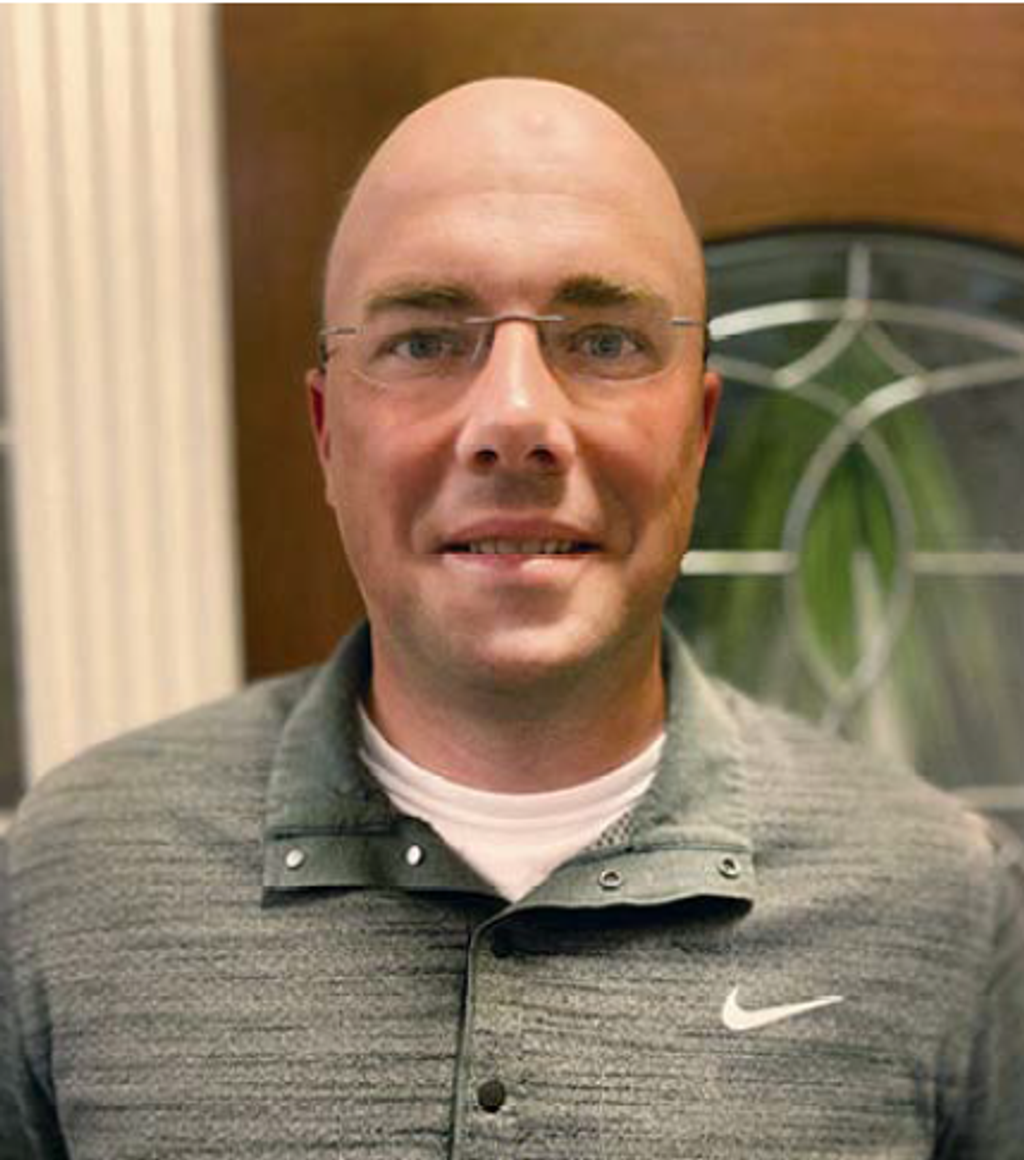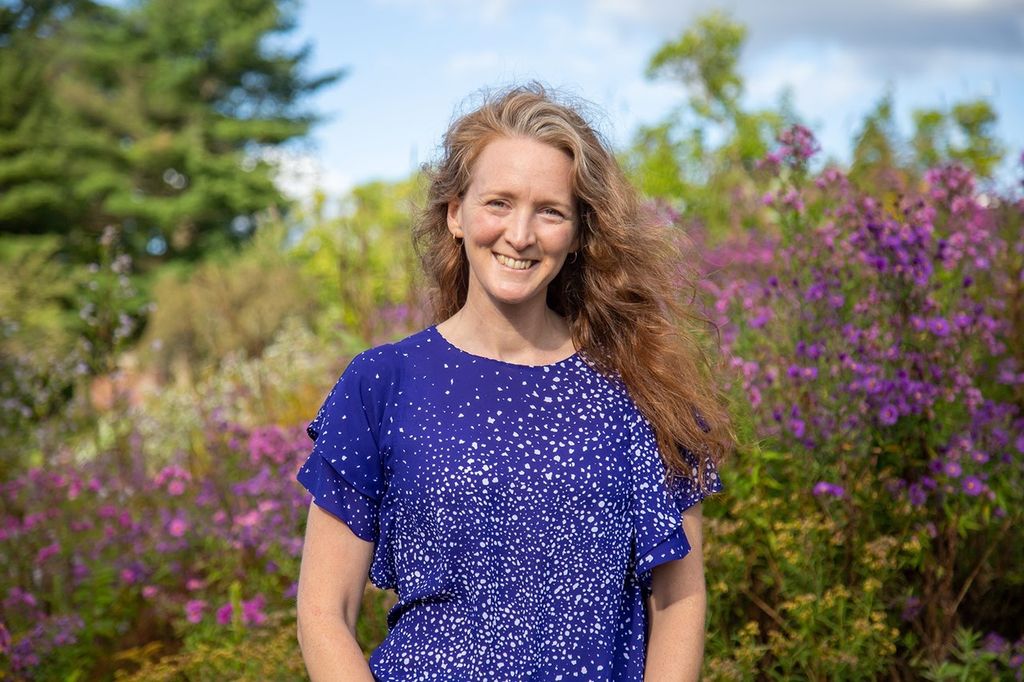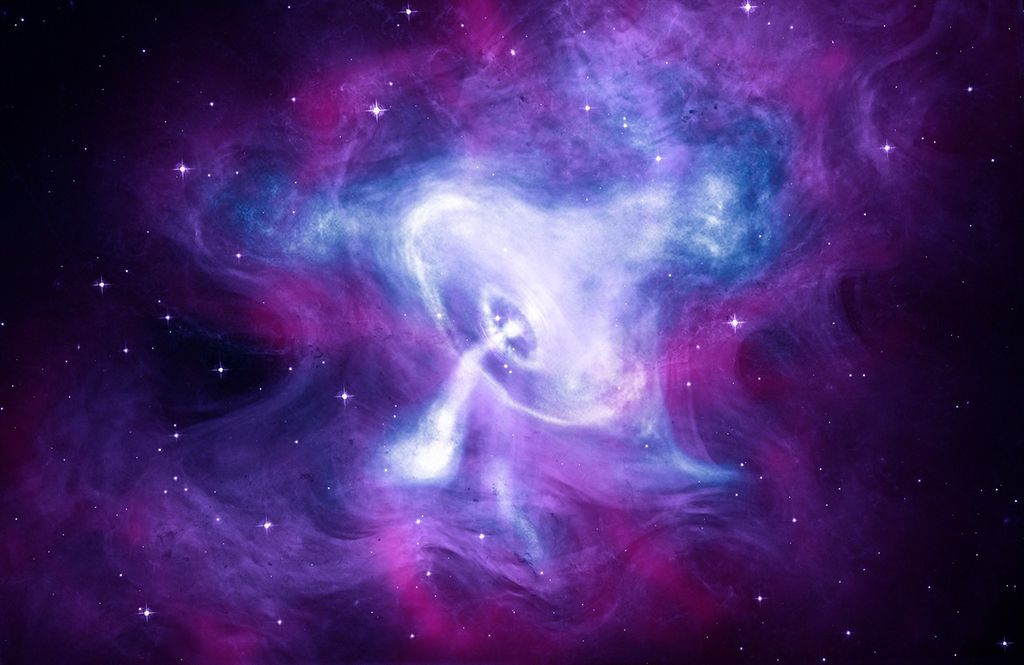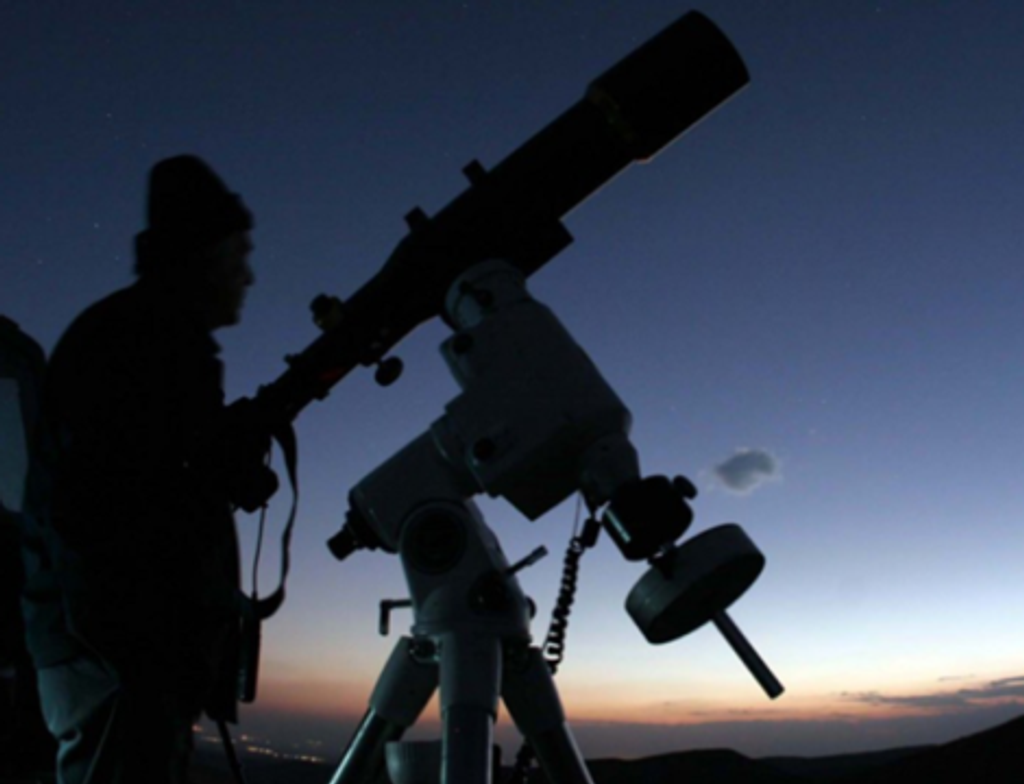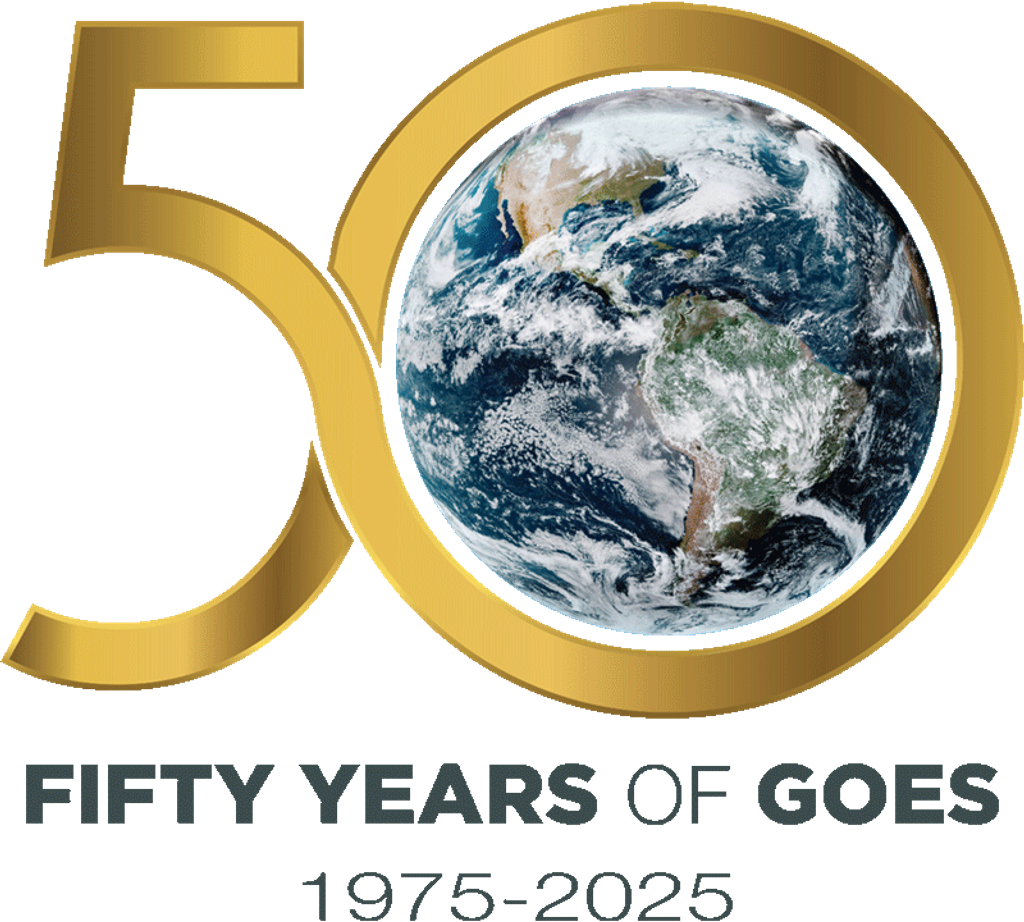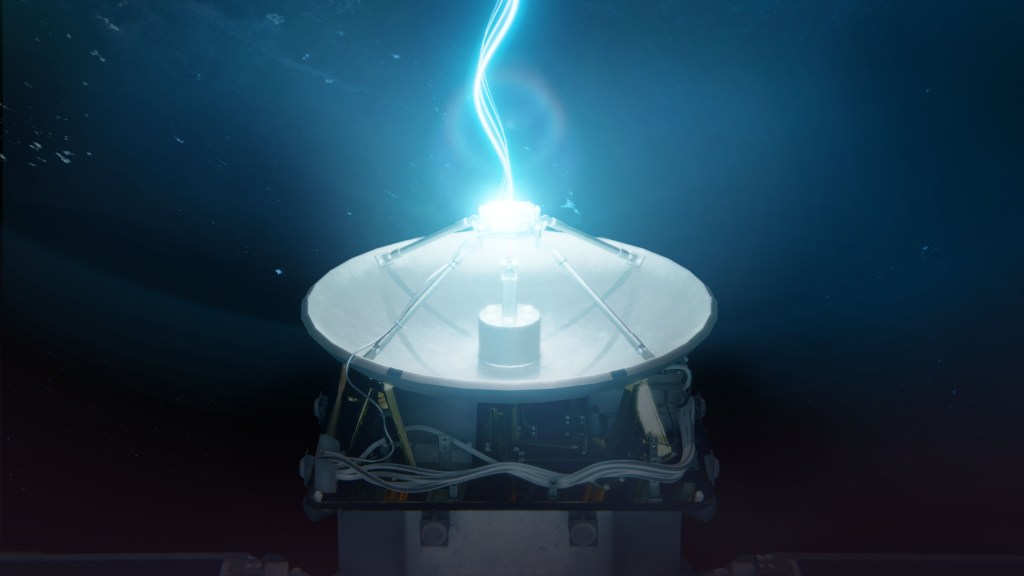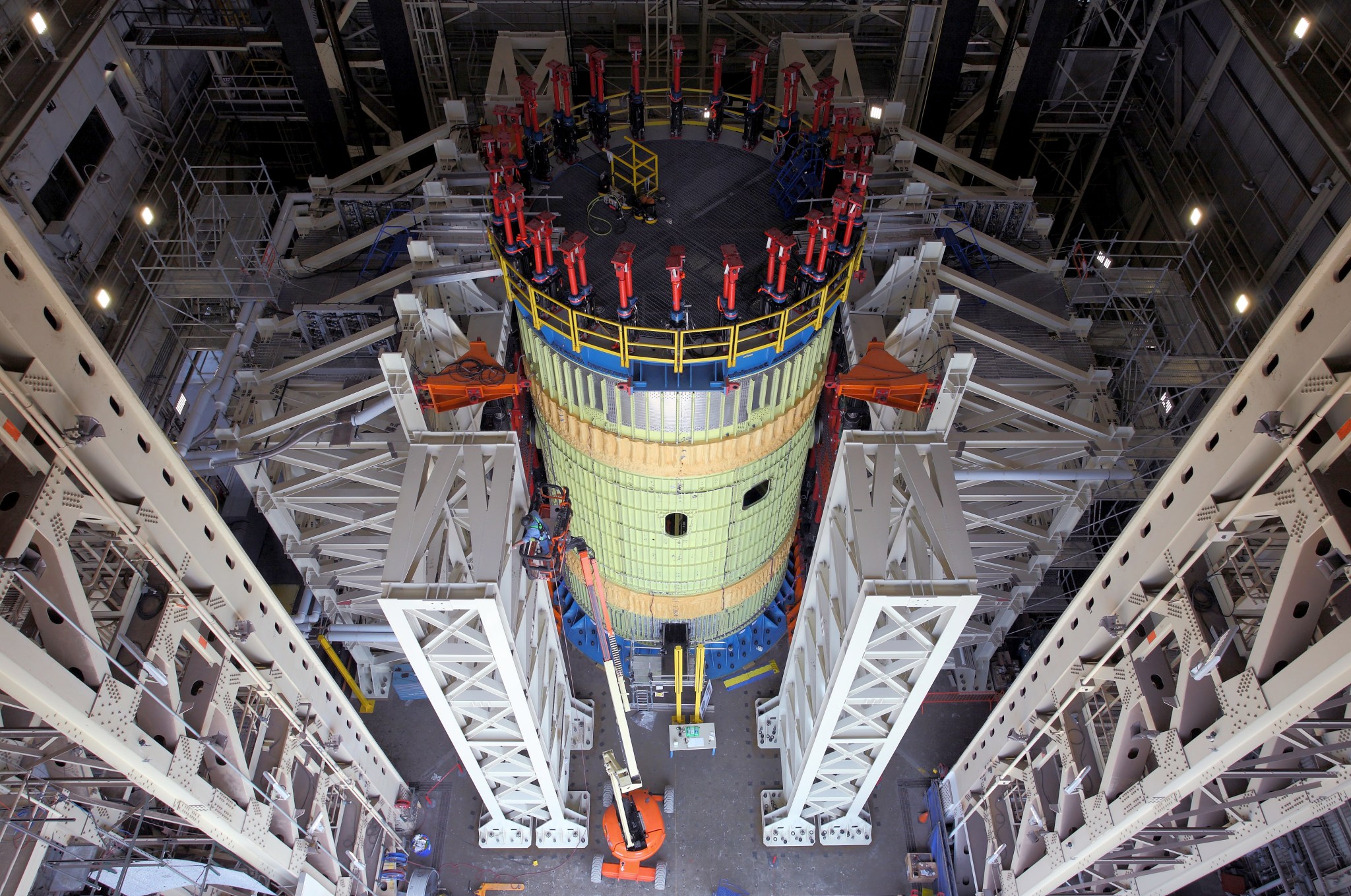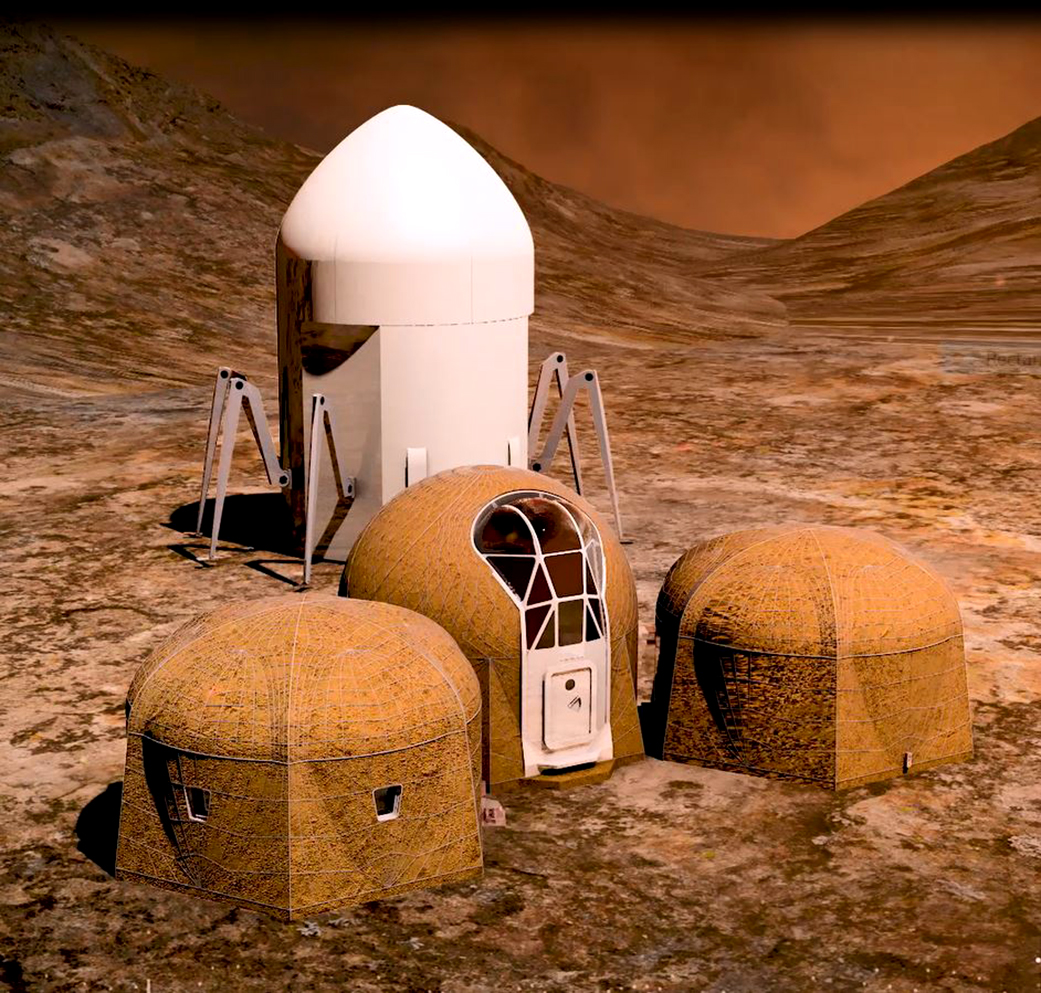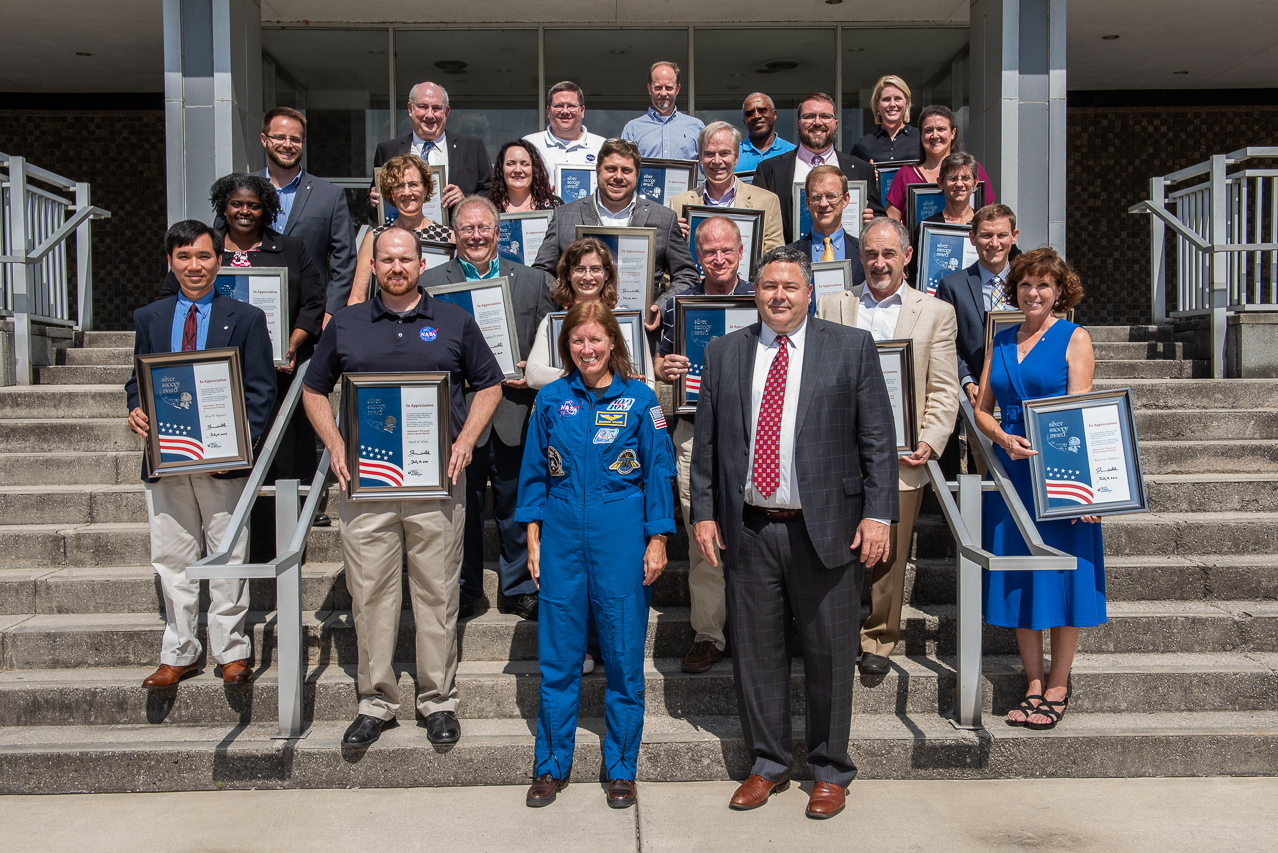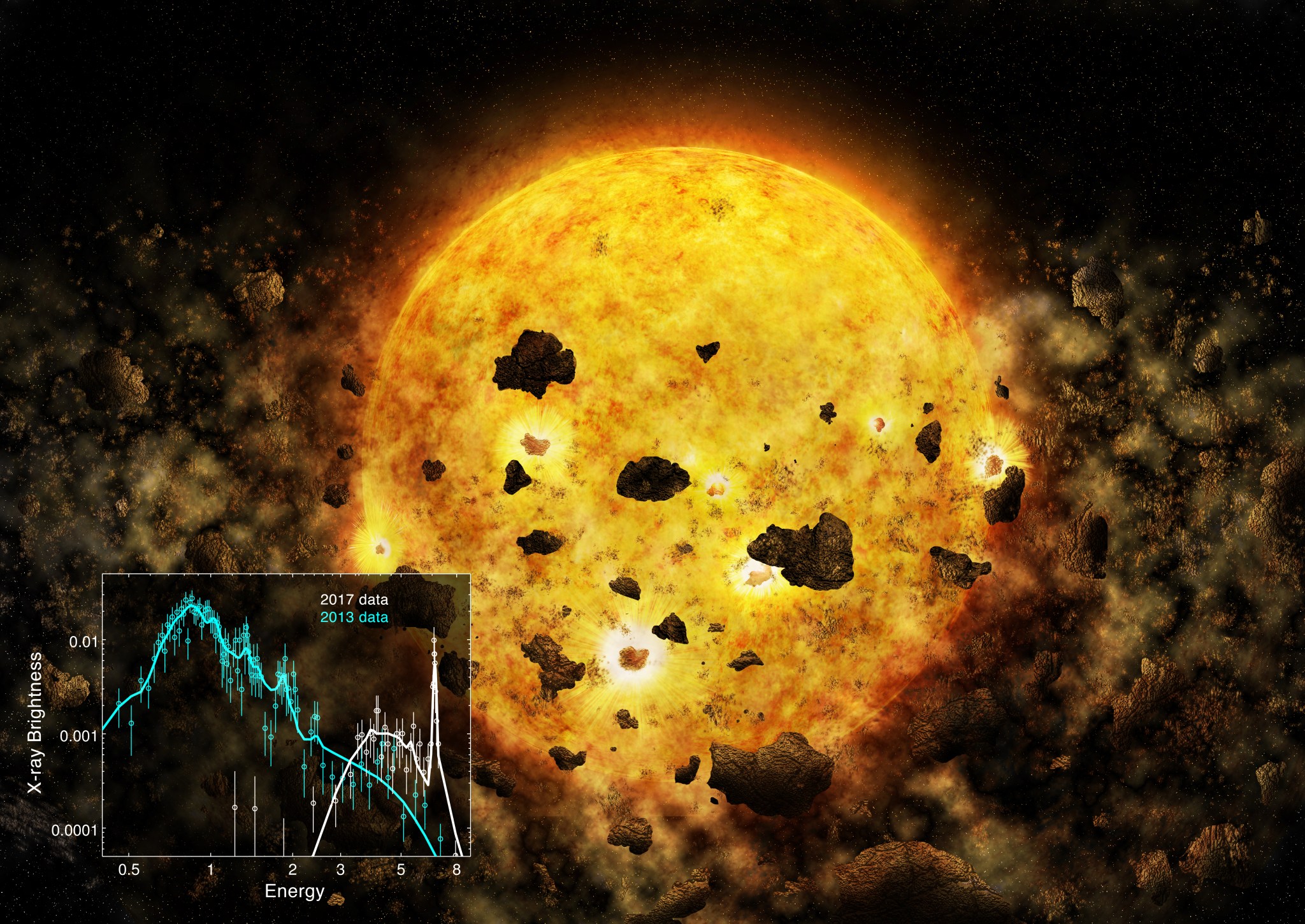In This Week’s Star
- Space Launch System Intertank Readied for Structural Testing
- Top Teams Win Share of $100,000 in Virtual Modeling Stage of 3D-Printed Habitat Competition
- NASA Honors Marshall Team Members with Silver Snoopy Awards
- Tech Tank Offers NASA Innovators Unique Opportunity to Pitch Ideas
- Essential to the Mission: Pam Bourque
- Chandra May Have First Evidence of a Young Star Devouring a Planet
- Rocket Science in 60 Seconds: What Is Exploration Mission-1?
- Shared Experience Forum Highlights Lessons Learned from Apollo, Challenger and Columbia
- This Week in NASA History: Chandra Launches – July 23, 1999
Space Launch System Intertank Readied for Structural Testing
Engineers installed structural test hardware for NASA’s deep space rocket, the Space Launch System, into a test stand at NASA’s Marshall Space Flight Center where testing recently began. The test version of the SLS intertank is being pushed, pulled and bent with millions of pounds of force to ensure it can withstand the forces of launch and ascent. The test hardware is structurally identical to the flight version of the intertank that will connect the core stage’s two colossal fuel tanks, serve as the upper-connection point for the two solid rocket boosters and house critical avionics and electronics. Delivered to Marshall via NASA’s barge Pegasus from NASA’s Michoud Assembly Facility this spring, the intertank is the second of four core stage structural test articles scheduled for testing at Marshall. The test facility for NASA’s new exploration rocket was originally used for Saturn V rocket testing that enabled the Apollo Moon missions. The facility’s special cranes and design features make it ideal for exposing large rockets and spacecraft to the extreme forces of spaceflight. (NASA/Tyler Martin)
Top Teams Win Share of $100,000 in Virtual Modeling Stage of 3D-Printed Habitat Competition
By Janet Sudnik
NASA and partner Bradley University of Peoria, Illinois, have selected the top five teams to share a $100,000 prize in the latest stage of the agency’s 3D-Printed Habitat Centennial Challenge competition.
Winning teams successfully created digital representations of the physical and functional characteristics of a house on Mars using specialized software tools. The teams earned prize money based on scores assigned by a panel of subject matter experts from NASA, academia and industry. The judges interviewed and evaluated submissions from 18 teams from all over the world and selected these teams:
- Team Zopherus of Rogers, Arkansas – $20,957.95
- AI. SpaceFactory of New York – $20,957.24
- Kahn-Yates of Jackson, Mississippi – $20,622.74
- SEArch+/Apis Cor of New York – $19,580.97
- Northwestern University of Evanston, Illinois – $17,881.10
“We are thrilled to see the success of this diverse group of teams that have approached this competition in their own unique styles,” said Monsi Roman, program manager for NASA’s Centennial Challenges, which is managed at NASA’s Marshall Space Flight Center. “They are not just designing structures, they are designing habitats that will allow our space explorers to live and work on other planets. We are excited to see their designs come to life as the competition moves forward.”
As NASA advances deep space exploration, reliable life-supporting habitats will be essential. But creating a structure on the surface of Mars is an extraordinary challenge considering the extensive limits on transporting materials and the differences in atmosphere and landscape. The 3D-Printed Habitat Challenge aims to further the progression of sustainable shelters that will someday occupy the Moon, Mars or beyond by pushing citizen inventors to develop new technologies capable of additively manufacturing a habitat using indigenous resources with, or without, recyclable materials.
The challenge, which began in 2014, is structured in phases:
- Phase 1, the Design Competition, required teams to submit architectural renderings and was completed in 2015 with a $50,000 prize purse.
- Phase 2, the Structural Member Competition, focused on material technologies, requiring teams to create structural components. It was completed in 2017 with a $1.1 million prize purse.
- Phase 3 (current), the On-Site Habitat Competition, challenges competitors to fabricate sub-scale habitats, and has five levels of competition — three construction levels and two virtual levels. For the virtual levels, teams must use Building Information Modeling software to design a habitat that combines allowances for both the structure and systems it must contain. The construction levels challenge the teams to autonomously 3D-print elements of the habitat, culminating with a one-third-scale printed habitat for the final level. This phase comes with a $2 million prize purse.
The 3D-Printed Habitat Challenge is managed through a partnership with NASA’s Centennial Challenges program and Bradley University. Bradley has partnered with sponsors Caterpillar, Bechtel and Brick & Mortar Ventures to administer the competition. The Centennial Challenges program is part of NASA’s Space Technology Mission Directorate.
Sudnik, an ASRC Federal/Analytical Services employee, supports the Office of Strategic Analysis & Communications.
NASA Honors Marshall Team Members with Silver Snoopy Awards
On July 18, team members at NASA’s Marshall Space Flight Center were honored with the coveted Silver Snoopy award. The NASA astronaut corps presents the Silver Snoopy to outstanding civil-service and contractor employees who have significantly contributed to America’s human spaceflight program.
Marshall Center Director Todd May and NASA astronaut Shannon Walker presented the awards to 22 Marshall team members during a ceremony in Morris Auditorium. For more information about the award, click here.
Honorees included William R. Lane, Justin A. Littell, Althea V. Moorhead, Karl W. Nelson, Neil Otte, Marlyn E. Terek and Chester E. Young of the Engineering Directorate; Royal “Brad” Bowhay, Heather B. Haney, Freddrick A. Lang, Katrina Norris and Mark A. White of the Space Launch System Program; Patricia D. Graves, Steven A. Moon and Karen L. Stephenson of the Human Exploration Development and Operation Office; Huy H. Nguyen and Jerod M. Wooten of the Safety and Mission Assurance Directorate; Gregory D. Smith of the Office of Center Operations; Wendy M. Joseph of the Office of the Chief Information Officer; Fred R. Kepner of the Office of Human Capital; Myron S. May of the Office of Strategic Analysis and Communications; and Kelly L. Looney of the Science and Technology Office.
Tech Tank Offers NASA Innovators Unique Opportunity to Pitch Ideas
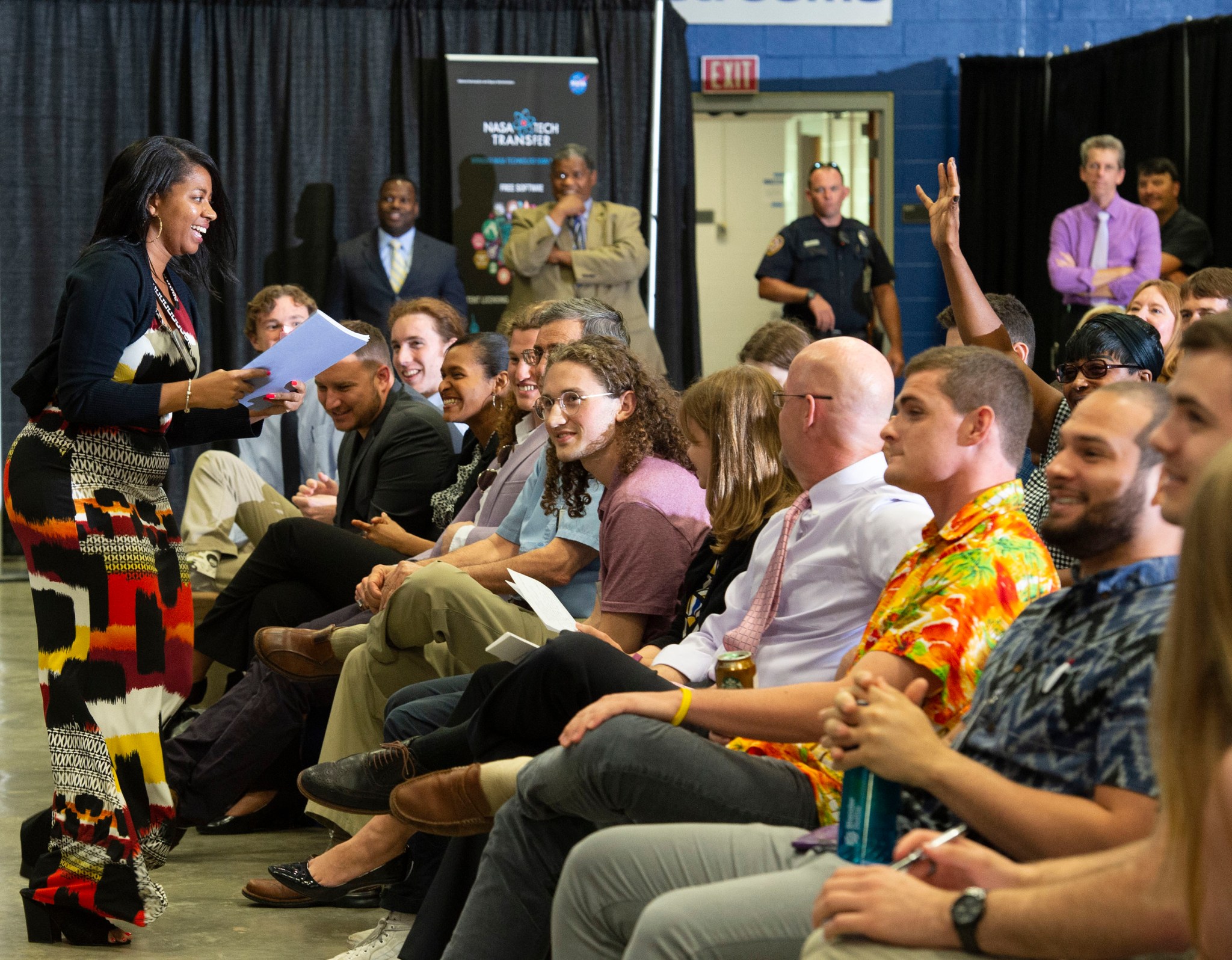
Some of NASA Marshall Space Flight Center’s most imaginative minds took the stage July 19 at the 2018 NASA Tech Tank to pitch ideas of innovation and technology. Here, LaBreesha Batey, left, hands out information related to her presentation on Nueropathy Experience Wellness to other participants at the event. Marshall’s Tech Tank is modeled after the television show, Shark Tank, a reality series allowing entrepreneurs a chance to present business ideas to a panel of judges. NASA’s version of the program saw more than half of the presenters walk away with agency funding to mature their respective ideas. Tech Tank is sponsored by Marshall’s Technology Transfer Office. (NASA/Emmett Given)
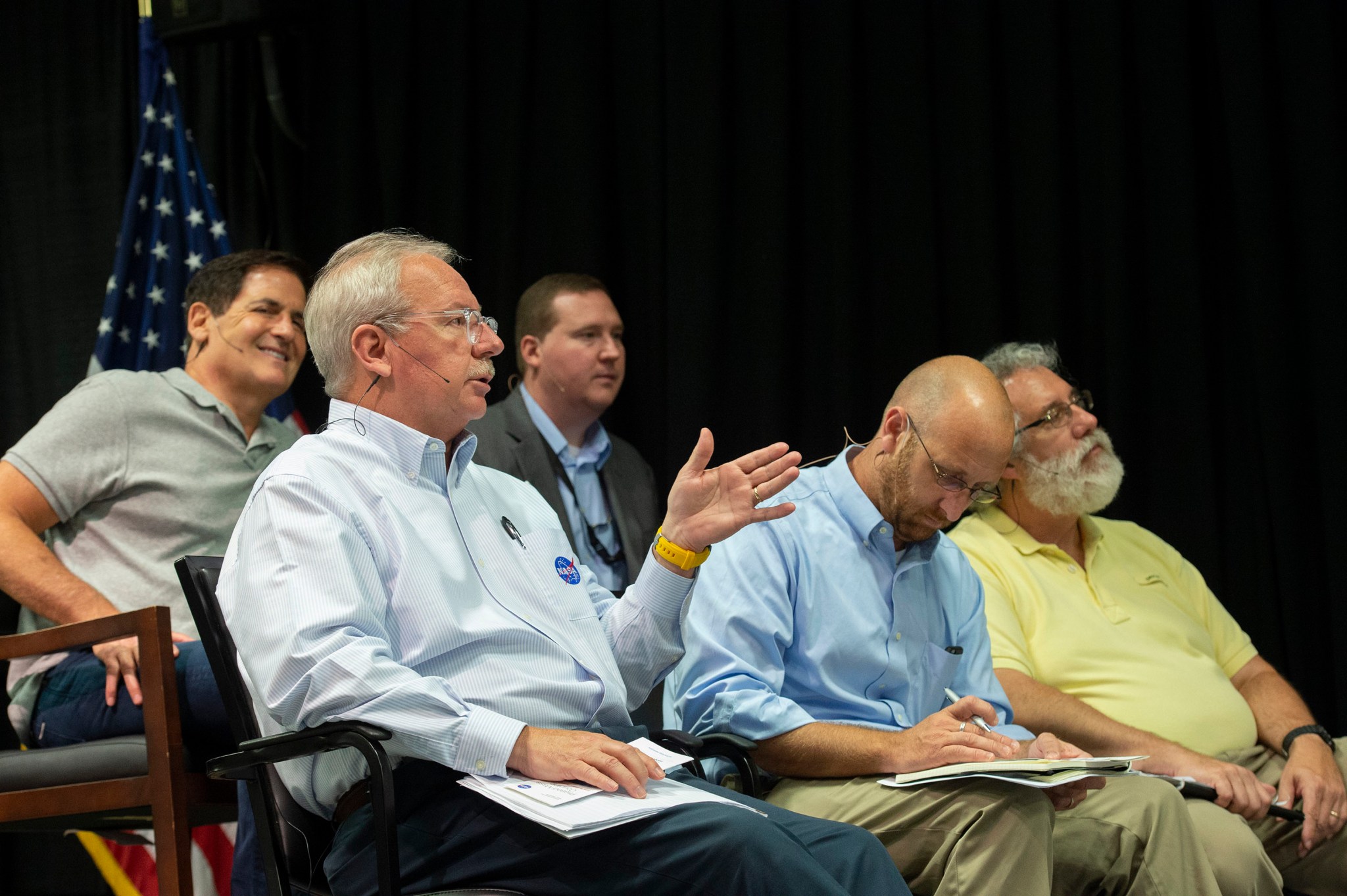
Participants at the 2018 Tech Tank were allowed two minutes to pitch their innovation or technology to a panel of judges from Marshall. Here, John Vickers, foreground at left, associate director of the Materials and Processes Laboratory, gives advice to one of the event’s presenters. Seated next to Vickers from right are Tyler Nester, Space Launch System integrated flight certification lead; and Richard McElyeah, Payload and Operations Division associate manager. The fourth judge was Marshall’s Chief Technologist John Dankanich, second row on the right, who is seated adjacent to special guest Mark Cuban, an investor on the television show Shark Tank. Cuban spoke to Marshall team members following the July 19 event in Building 4316. (NASA/Emmett Given)
Essential to the Mission: Pam Bourque
By Jonathan Deal
One of NASA’s most important offices is also one that often goes unnoticed. It’s an office that is instrumental in keeping other agency organizations running smoothly and provides expert advice and support at all NASA centers.
The Office of the Chief Counsel at NASA’s Marshall Space Flight Center does all that and more. It’s people like Pam Bourque who exemplify what the office stands for.
“I was trained here at Marshall, which is a great place to learn how to be a lawyer,” said Bourque, who is assistant chief counsel for general law. “There have been some great attorneys and mentors here over the years. In the general law practice area, we deal with a lot of ethics requirements that apply to civil servants. We make sure everyone is aware of the laws by training the workforce.”
Bourque and other general law attorneys in the Office of the Chief Counsel review financial disclosure forms and give ethics opinions when people have questions. They also support the Office of Human Capital regarding personnel actions, and defend NASA when claims are filed against the agency.
In addition to general law, Marshall has attorneys specializing in procurement law, which supports the acquisition function and defends the agency against protests and claims; and in intellectual property law, which protects NASA’s intellectual property rights, assists government inventors and advises on export control issues.
“I feel our office is the facilitator that allows the engineers and scientists to do their best work,” said Bourque. “When you think about what different government agencies do, NASA pushes humanity forward in knowledge and achievement and represents the best of what people can do. Our office plays a role in making sure the workforce can focus on the mission. We help them navigate their way through regulatory mazes or statutory restrictions, so they don’t get bogged down in that process.”
At NASA Headquarters, the Office of the General Counsel is responsible for developing legal program requirements and developing quality standards for NASA’s legal practice. Bourque and her colleagues at Marshall work closely with NASA Headquarters and participate in numerous community of practice groups across NASA centers.
“All the surveys are right: This is the best place to work in the federal government,” said Bourque. “I’m not an engineer or scientist, but I do feel like I’m part of what clears the path or removes obstacles so the mission can go forward. It’s great to feel like you are part of this bigger picture and are helping the agency.”
Deal, an ASRC Federal/Analytical Services employee and the Marshall Star editor, supports the Office of Strategic Analysis & Communications.
Chandra May Have First Evidence of a Young Star Devouring a Planet
Scientists may have observed, for the first time, the destruction of a young planet or planets around a nearby star. Observations from NASA’s Chandra X-ray Observatory indicate that the parent star is now in the process of devouring the planetary debris. This discovery gives insight into the processes affecting the survival of infant planets. NASA’s Marshall Space Flight Center manages the Chandra program for NASA’s Science Mission Directorate. (NASA/CXC/M. Weiss; X-ray spectrum: NASA/CXC/MIT/H. M.Günther)
Rocket Science in 60 Seconds: What Is Exploration Mission-1?
Rocket Science in 60 Seconds gives you an inside look at work being done at NASA to explore deep space like never before on Exploration Mission-1 (EM-1), the first flight of NASA’s Space Launch System rocket and Orion spacecraft. Mike Sarafin, the EM-1 mission manager, explains how this mission beyond the Moon will unfold and what we will learn. For more information about Exploration Mission-1, visit https://www.nasa.gov/content/exploration-mission-1. (NASA)
Shared Experience Forum Highlights Lessons Learned from Apollo, Challenger and Columbia
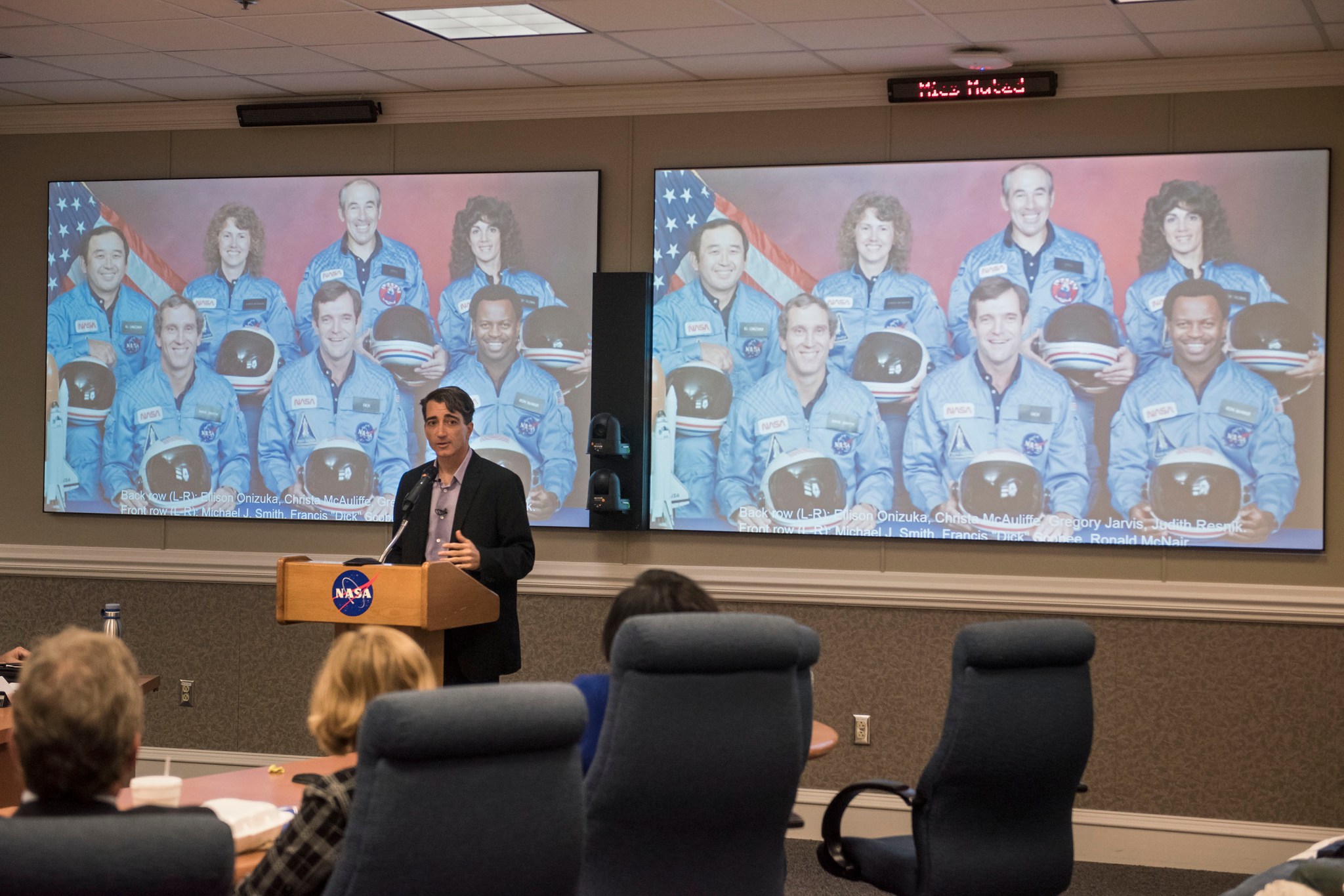
Michael Ciannilli, NASA’s Apollo Challenger Columbia Lessons Learned program manager, speaking at the July 19 Shared Experiences forum at NASA’s Marshall Space Flight Center, stresses the importance of learning from the Apollo I, Challenger and Columbia missions to ensure future success. Ciannilli is located at NASA’s Kennedy Space Center. The Shared Experiences forum is part of Marshall’s Mission Success is in Our Hands initiative, a partnership between Marshall’s Safety & Mission Assurance Directorate and Jacobs Engineering. (NASA/Charles Beason)
This Week in NASA History: Chandra Launches – July 23, 1999
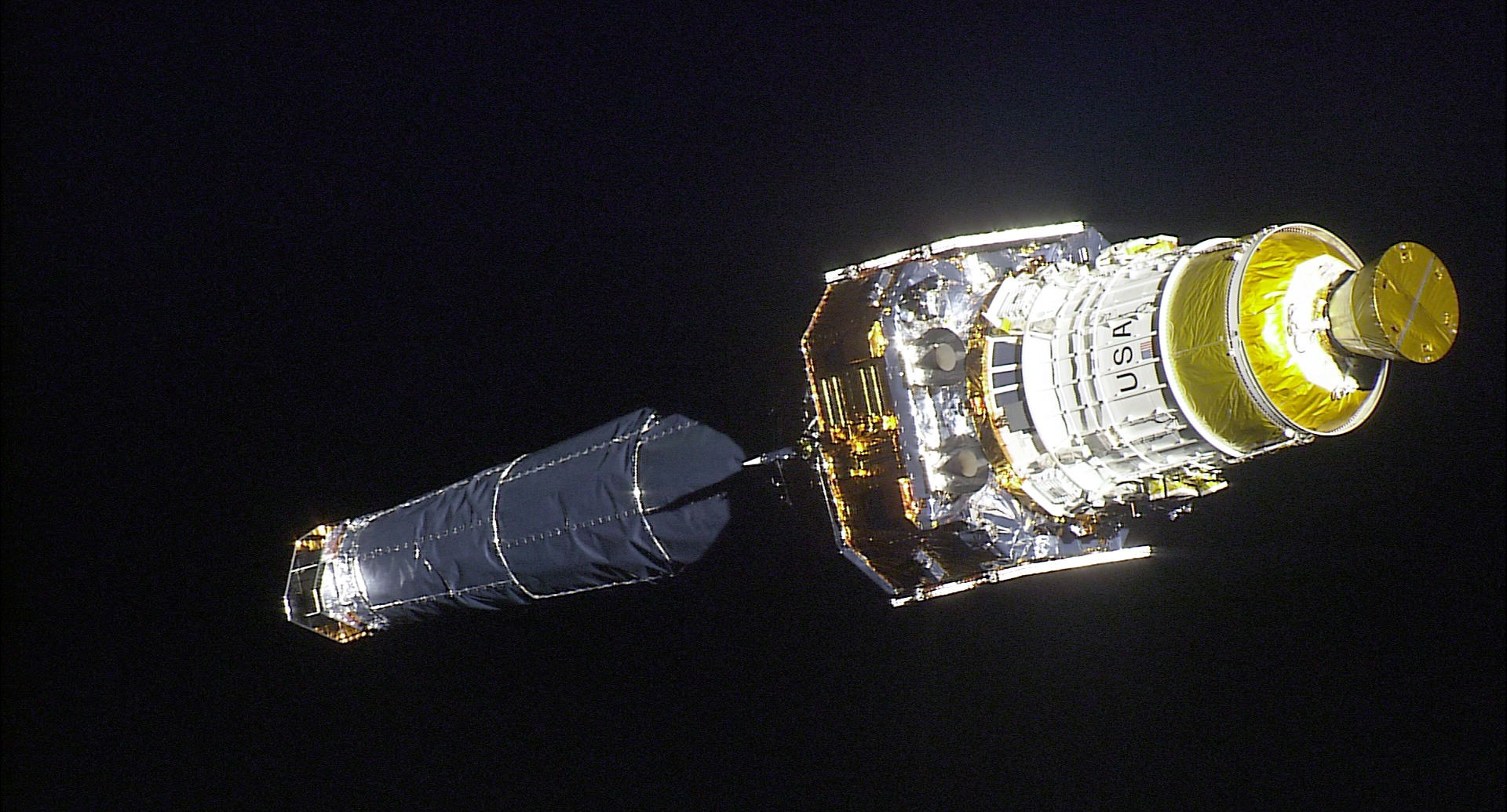
This week in 1999, the space shuttle Columbia, mission STS-93, launched from NASA’s Kennedy Space Center on a four-day mission to deliver the Chandra X-ray Observatory to low-Earth orbit. Chandra was then propelled to an orbit of 44,759 miles in altitude using a two-stage Inertial Upper Stage. This was the first mission in shuttle history to be commanded by a woman, astronaut Eileen Collins. Here, Chandra and its upper stage separate from Columbia with the STS-93 HDTV Camcorder stowed inside the crew cabin. NASA’s Marshall Space Flight Center manages the Chandra program for NASA’s Science Mission Directorate. The NASA History Program is responsible for generating, disseminating, and preserving NASA’s remarkable history and providing a comprehensive understanding of the institutional, cultural, social, political, economic, technological and scientific aspects of NASA’s activities in aeronautics and space. For more pictures like this one and to connect to NASA’s history, visit the Marshall History Program’s webpage. (NASA)


